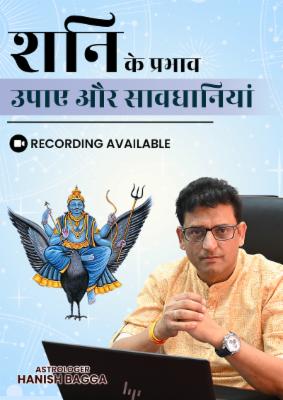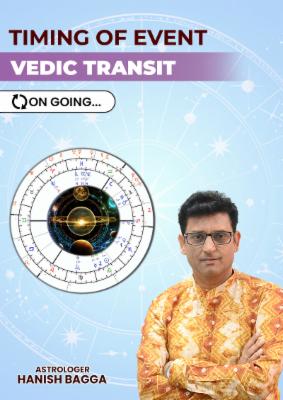Introduction to Somnath Temple
Nestled in the heart of Chhattisgarh, the Somnath Temple stands as a testament to the rich cultural and spiritual heritage of central India. This magnificent structure attracts devotees and tourists alike, offering a unique blend of architectural beauty and religious significance. In this blog post, we’ll delve into the various aspects that make the Somnath Temple in Chhattisgarh a must-visit destination for spiritual seekers and history enthusiasts.

Location and Accessibility
The Somnath Temple is located in the city of Raipur, the capital of Chhattisgarh. Situated in the Kota area of the city, the temple is easily accessible by various modes of transportation. Visitors can reach Raipur by air, rail, or road, making it convenient for pilgrims and tourists from all parts of the country to visit this sacred site.
Address: Kota, Raipur, Chhattisgarh, India
Historical Significance
While not as ancient as its namesake in Gujarat, the Somnath Temple in Chhattisgarh holds its own historical importance. Built in the late 20th century, this temple was constructed to honor Lord Shiva and provide a spiritual center for the people of Chhattisgarh. The temple’s creation was inspired by the original Somnath Temple in Gujarat, which has a history dating back over a thousand years.
The establishment of this temple in Raipur signifies the cultural and religious revival in the region, showcasing the enduring devotion to Lord Shiva in central India. It serves as a reminder of the rich spiritual traditions that have been preserved and continue to thrive in modern times.
Architectural Marvel
The Somnath Temple in Chhattisgarh is a stunning example of modern Indian temple architecture. Its design incorporates elements of traditional North Indian temple styles, particularly those found in the Nagara architectural tradition. The temple’s striking features include:
- Towering Shikhara: The temple boasts a magnificent spire or shikhara that rises majestically into the sky, symbolizing the ascending human spirit reaching towards the divine.
- Intricate Carvings: The exterior walls of the temple are adorned with intricate carvings depicting various deities, mythological scenes, and geometric patterns, showcasing the skill of local artisans.
- Spacious Mandapa: A large, pillared hall or mandapa leads to the main sanctum, providing ample space for devotees to gather and participate in religious ceremonies.
- Ornate Entrance: The temple features a beautifully crafted entrance gateway, often embellished with sculptures and decorative motifs.
- Sacred Pool: Many temples dedicated to Lord Shiva include a sacred water body, and the Somnath Temple in Chhattisgarh may also feature a well-maintained kund or pool for ritual ablutions.
The architectural grandeur of the temple not only serves as a place of worship but also as a testament to the rich cultural heritage of Chhattisgarh.
Deities and Worship
As its name suggests, the primary deity worshiped at the Somnath Temple is Lord Shiva, one of the principal deities in Hinduism. The main sanctum houses a Shiva Linga, the aniconic representation of Lord Shiva, which is the focal point of devotion and rituals.
In addition to Lord Shiva, the temple may also house shrines dedicated to other deities associated with Shaivism, such as:
Goddess Parvati, Lord Shiva’s consort
Lord Ganesha, the elephant-headed god of wisdom and new beginnings
Lord Kartikeya, also known as Murugan, the god of war and victory
Devotees visiting the temple can participate in various forms of worship, including:
- Darshan: Viewing and paying respects to the deities
- Abhishekam: Ritual bathing of the Shiva Linga with water, milk, and other sacred substances
- Aarti: The offering of light through the waving of lit lamps accompanied by devotional songs
- Puja: Ritualistic worship involving the offering of flowers, fruits, and other items to the deities
Festivals and Celebrations
The Somnath Temple in Chhattisgarh comes alive during various Hindu festivals and auspicious occasions. Some of the major celebrations observed at the temple include:
- Maha Shivratri: This is one of the most important festivals celebrated at the temple, usually falling in February or March. Devotees observe fasts, perform special pujas, and participate in night-long vigils and chanting.
- Shravan Month: The entire month of Shravan (usually July-August) is considered sacred to Lord Shiva. Mondays during this month see increased devotee footfall and special rituals.
- Navaratri: Although primarily associated with the worship of the Divine Mother, many Shiva temples also celebrate this nine-night festival with special pujas and cultural programs.
- Kartik Purnima: This full moon day, usually falling in November, is considered auspicious for worshiping Lord Shiva. The temple may organize special events on this day.
- Diwali: The festival of lights is celebrated with great enthusiasm, with the temple being beautifully illuminated and special aarti ceremonies conducted.
During these festivals, the temple is adorned with colorful decorations, and special prasad (blessed food) is distributed to devotees. Cultural programs, including devotional music and dance performances, may also be organized, adding to the festive atmosphere.
Visitor Information
For those planning a visit to the Somnath Temple in Chhattisgarh, here’s some essential information:
Timings: The temple is typically open from early morning to late evening. However, it’s best to confirm the exact timings before your visit, as they may vary seasonally or during special occasions.
Best Time to Visit: The temple can be visited throughout the year. However, the winter months (October to February) offer pleasant weather conditions for exploring the temple and its surroundings.
Aarti Timings: The temple usually conducts aartis multiple times a day. The morning and evening aartis are particularly popular among devotees. It’s advisable to check the specific aarti timings upon arrival or by contacting the temple administration.
Dress Code: As with most Hindu temples, it’s recommended to dress modestly out of respect for the sacred space. Both men and women should avoid shorts and sleeveless tops.
Photography: Photography may be restricted inside the main sanctum. It’s best to check with the temple authorities regarding photography rules in other areas of the temple complex.
Prasad: Devotees can offer and receive prasad at the temple. This usually includes flowers, fruits, and sweets that are blessed by the deity.
Accessibility: The temple is generally accessible to all, including elderly visitors and those with mobility challenges. However, it’s advisable to check in advance for any specific facilities or assistance required.
Spiritual Experience
Visiting the Somnath Temple in Chhattisgarh offers more than just a glimpse of architectural beauty; it provides a profound spiritual experience. The serene atmosphere, the resonating sound of temple bells, and the devoted chants of pilgrims create an ambiance conducive to meditation and self-reflection.
Many visitors find peace and solace in simply sitting within the temple premises, absorbing the spiritual vibrations. The temple also serves as a center for learning about Hindu philosophy and traditions, with priests often available to explain the significance of various rituals and symbols.
For those seeking a deeper connection, participating in the temple’s rituals, such as the abhishekam or aarti, can be a transformative experience. The collective energy of devotees during these ceremonies often leaves a lasting impression on participants.
Conclusion of Somnath Temple
The Somnath Temple in Chhattisgarh stands as a beacon of spirituality and cultural richness in central India. Its architectural grandeur, historical significance, and vibrant religious practices make it a must-visit destination for both devotees and tourists. Whether you’re seeking spiritual solace, admiring architectural marvels, or exploring the cultural heritage of Chhattisgarh, this temple offers an enriching experience.




















